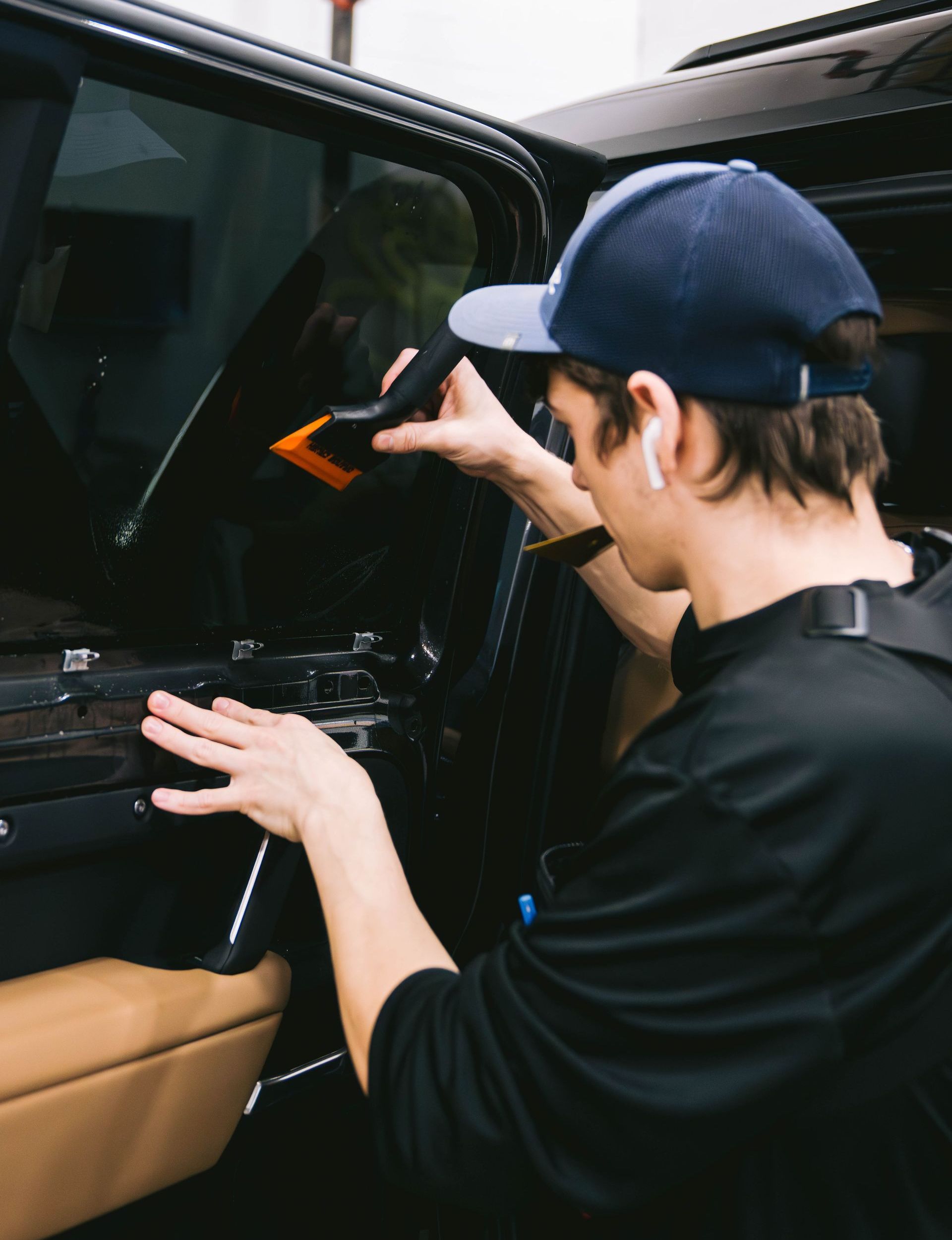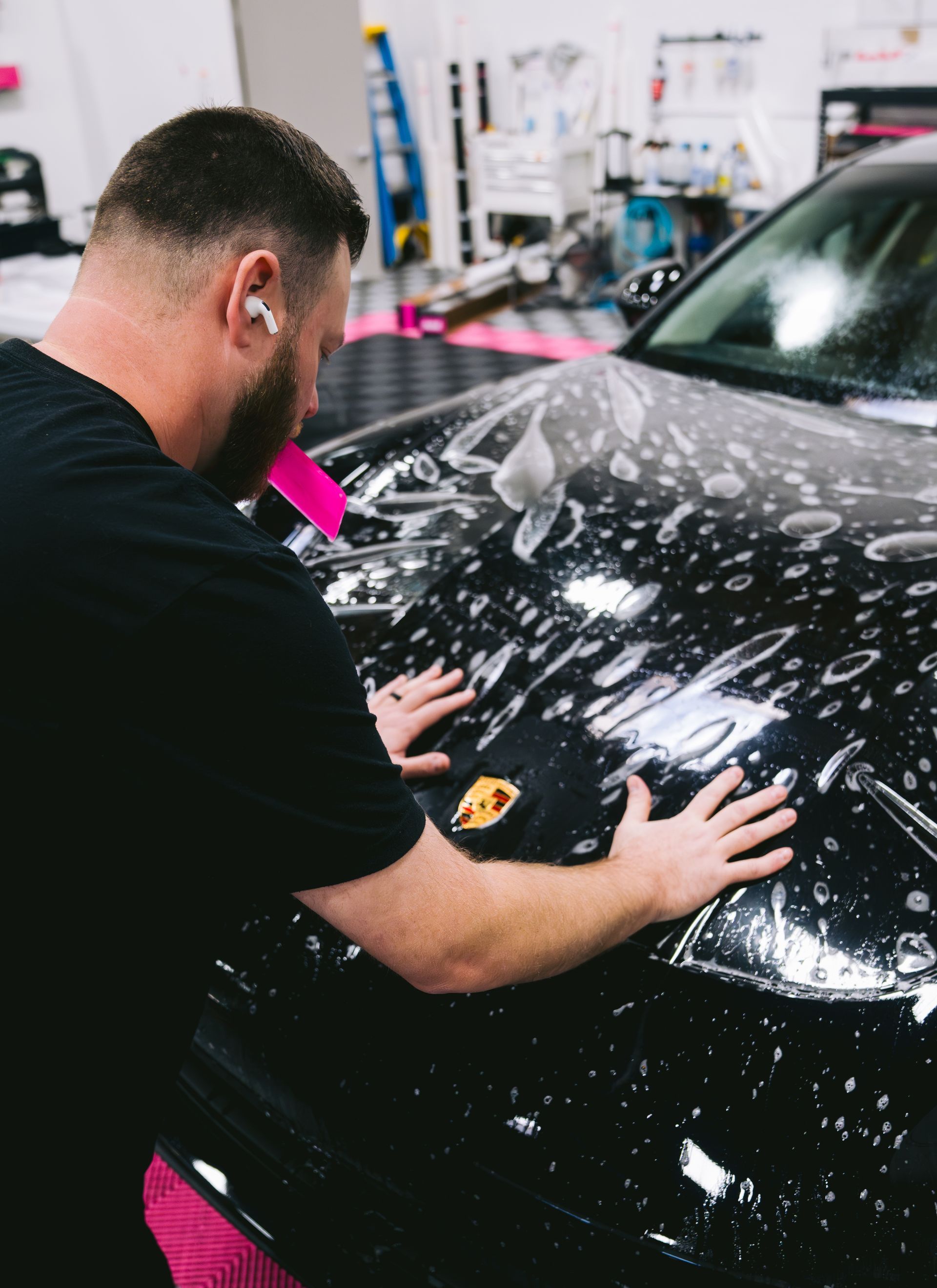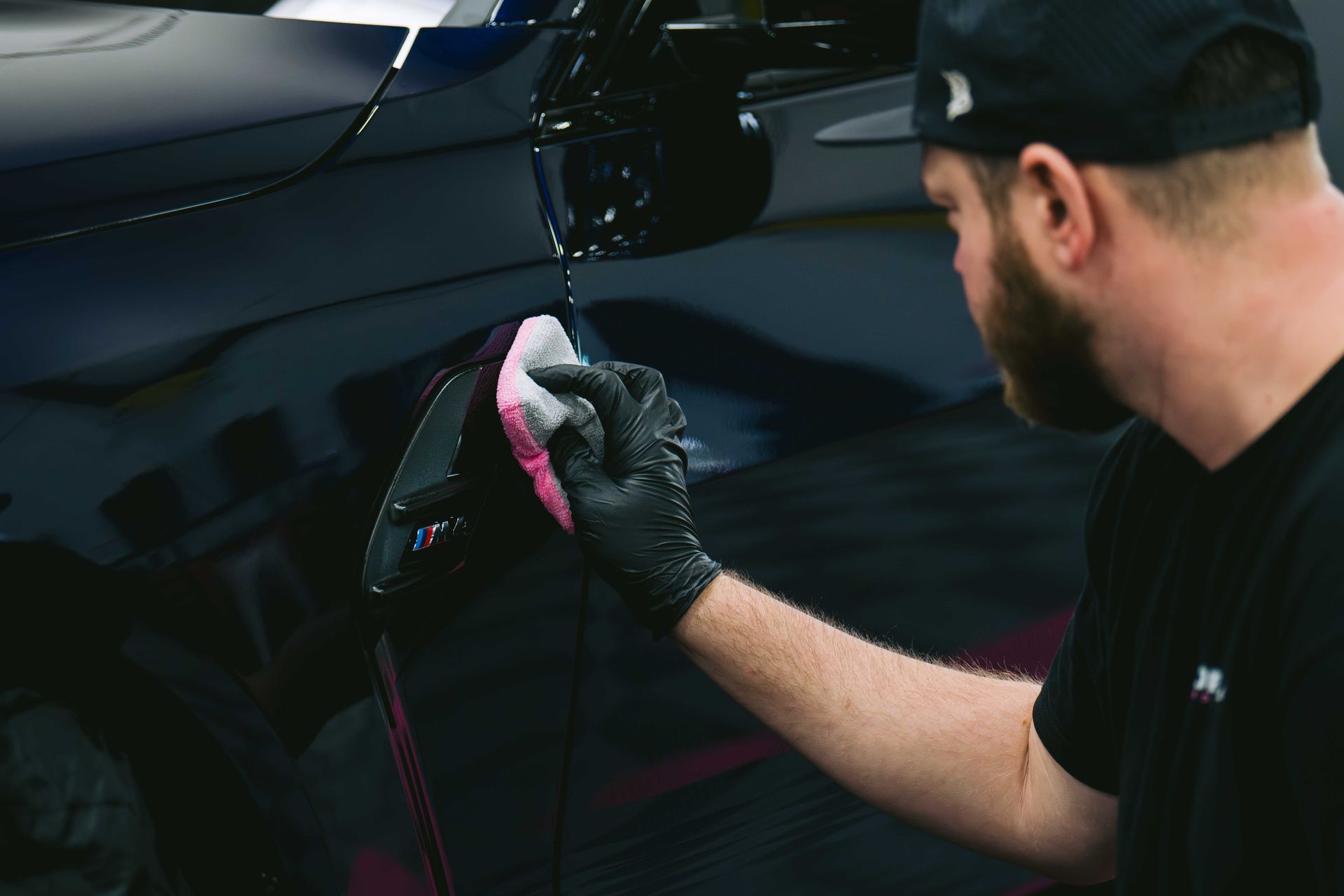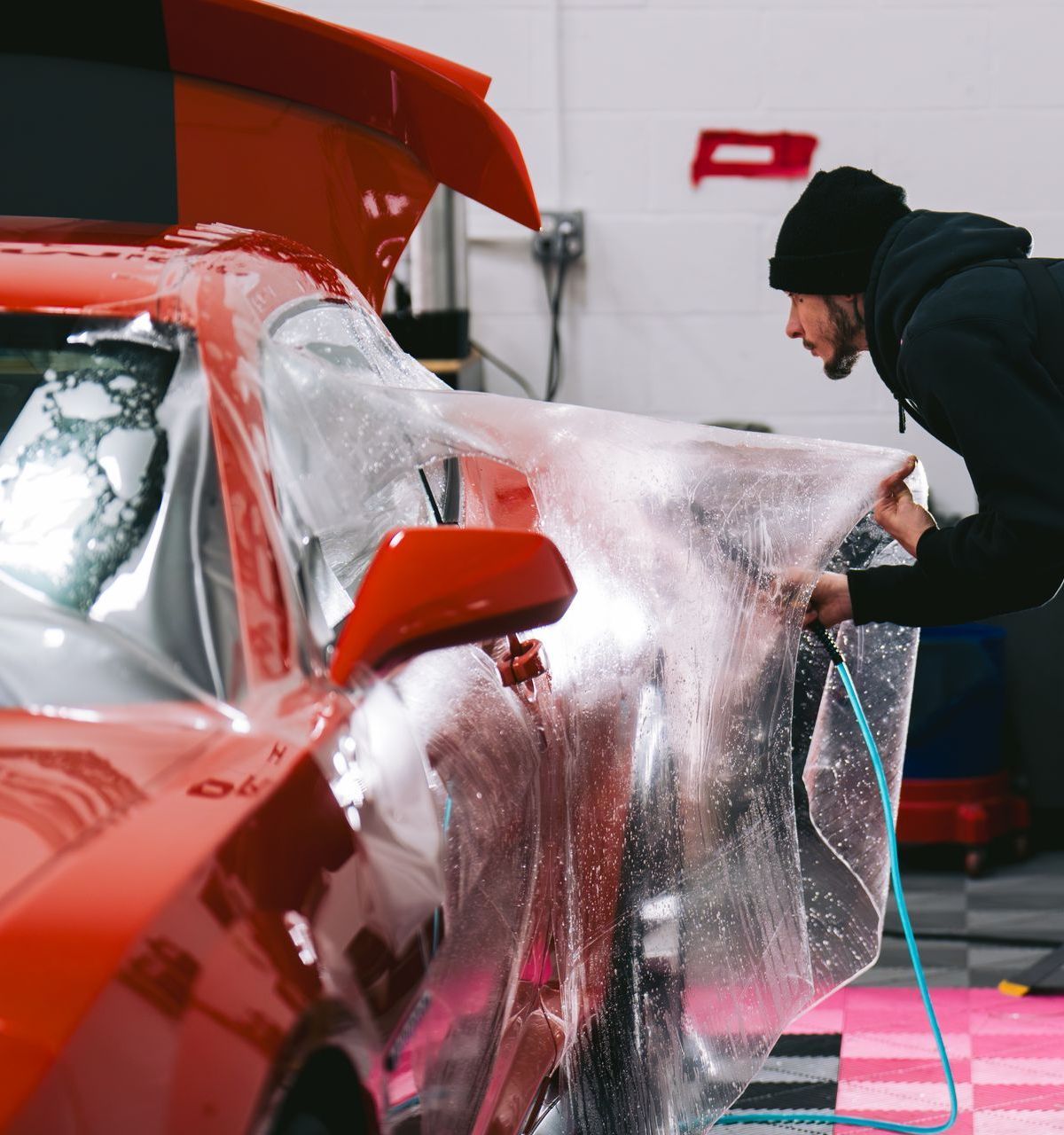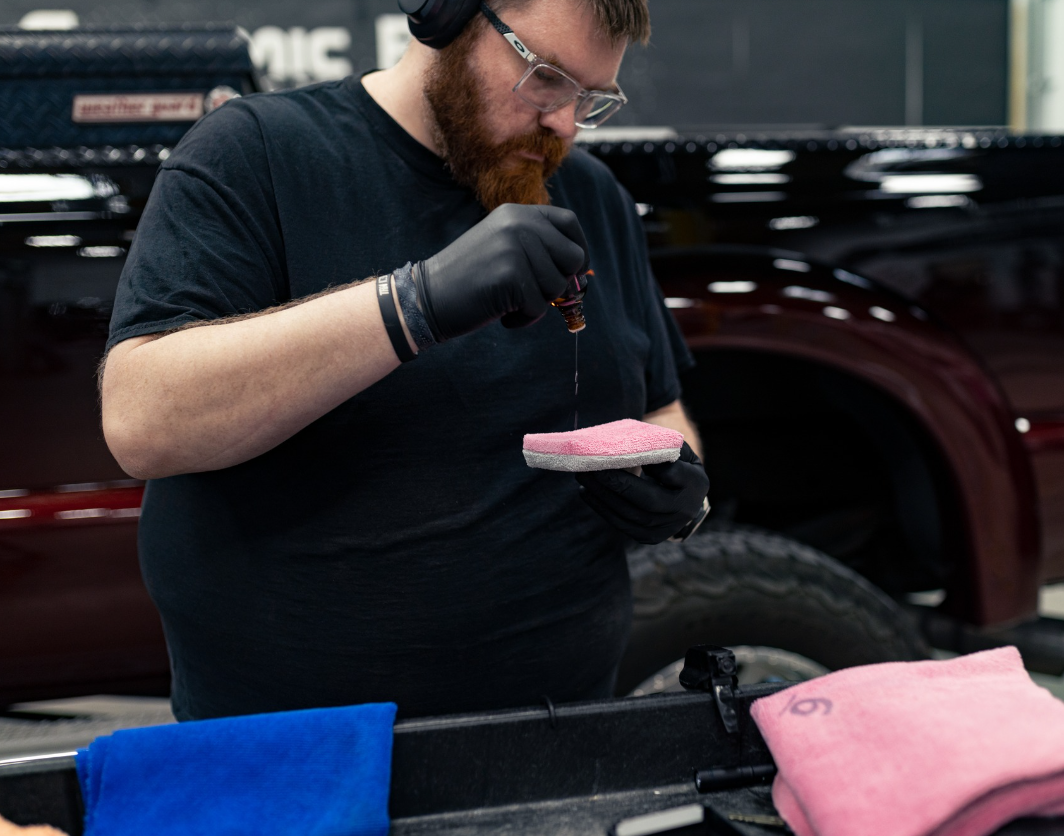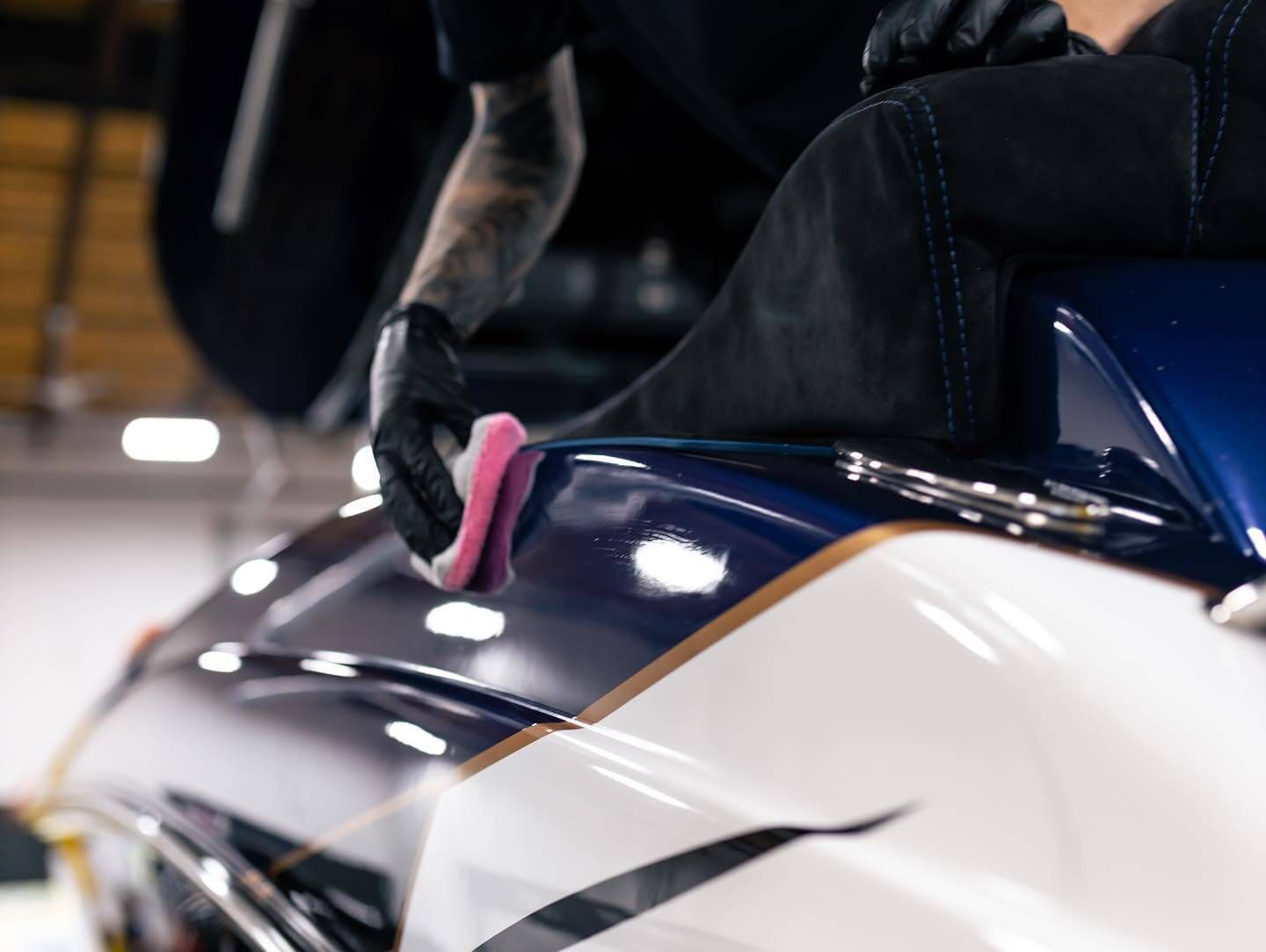Yes! A ceramic coat is a good choice for your Tesla. It provides an extra layer of protection that defends against UV rays, dirt, acid rain, and other surfaces that can harm your car. Not only does it enhance the beauty of your vehicle with its glossy finish, but it also makes it easier to clean. Surprisingly, it gives you longer-lasting protection than traditional waxes or sealants. Now, let's dive into what this ceramic coating really is for your Tesla!
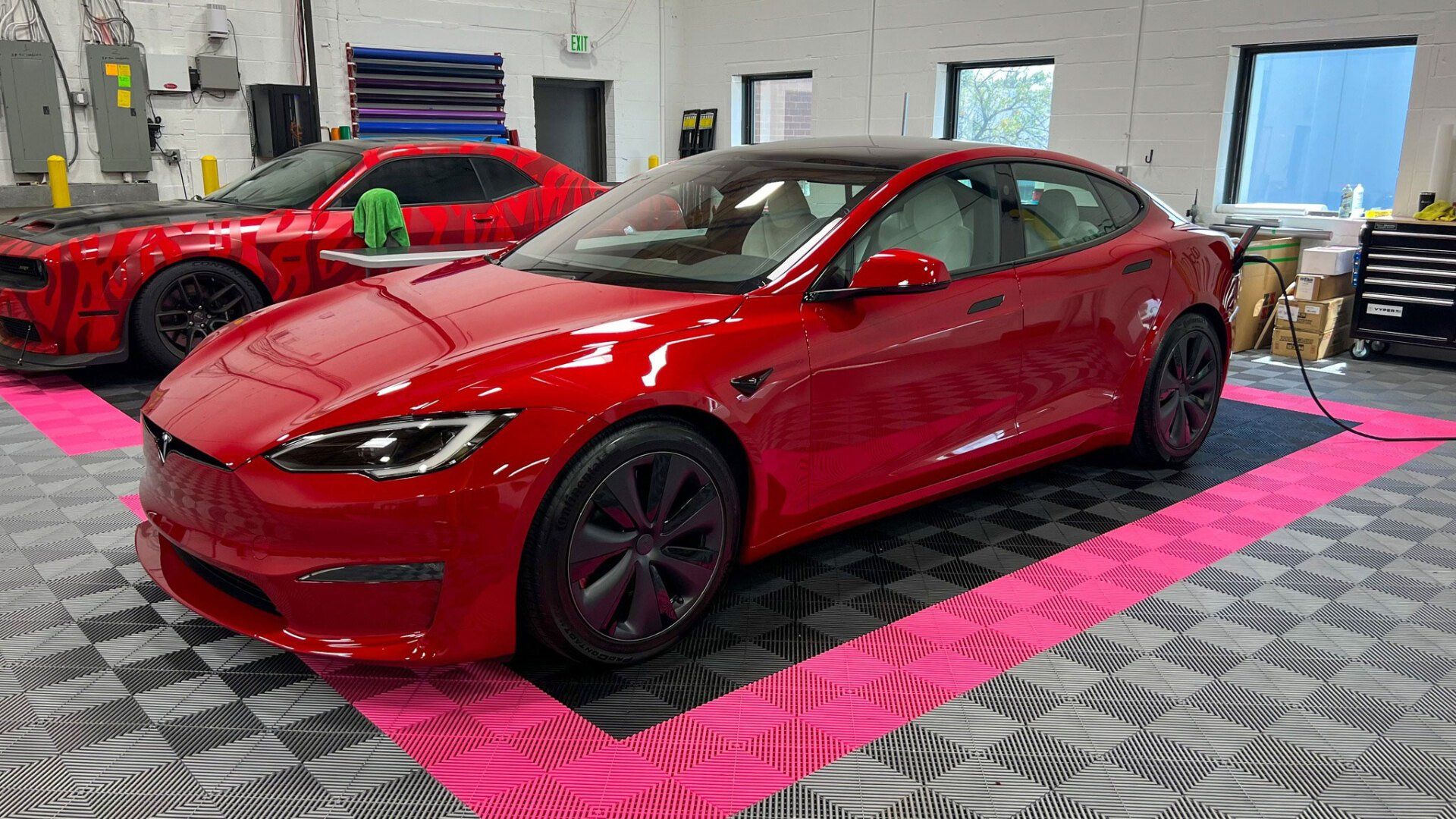
What is Ceramic Coating for Tesla?
Ceramic coating has long been considered an indispensable automotive care option, and your Tesla could benefit immensely from having one applied. Think of it like applying an invisible layer of protection from Mother Nature; ceramic coating offers just such an opportunity.
UV rays, dirt, grime, acid rain and bird droppings—the ceramic coating stands firm against them all. More than just protection for your paint job, ceramic coating adds glossiness that adds an aesthetic element that elevates it further.
Why opt for ceramic coating when traditional waxes and sealants exist? The answer lies in longevity: traditional solutions provide some protection but typically wear off in several months, leaving your car vulnerable again; in contrast, ceramic coatings have become famous for their long-term strength,
providing safeguarding effects that outlive even regular waxes and sealants.
Ceramic coatings add an extra element to their charm: water repelling effortlessly from your car—something traditional waxes simply cannot achieve! Not only does this simplify cleaning but it also acts as a preventative against water spots and etching.
Ceramic coating acts as an avant-garde protective shield for your Tesla, increasing both its appearance and durability beyond what conventional waxes or sealants can match. Our investigation now moves toward unraveling all types available on the market—welcome to the future of automotive protection and sophistication!
Suitable Types of Ceramic Coatings for Tesla
Ceramic coatings come in various compositions, efficiencies, and durabilities. Comprehending each variant can assist you in making an informed choice on how to best safeguard your Tesla's paint job. The different types of ceramic coatings available are:
Nano Ceramic Coating
Nanoceramic coating is well-regarded due to its chemically bonding properties with the vehicle's paint. This forms a protective layer that's robust and long-lasting, shielding the paint from environmental contaminants and minor abrasions. An essential feature is its hydrophobic nature, effectively repelling water and keeping your Tesla looking clean and sleek even in wet conditions. The glossy finish it delivers adds an extra layer of aesthetic appeal, giving your car that showroom shine every day.
Quartz or Silica Coating
Quartz or silica coatings utilize silicon dioxide particles to create a sturdy, durable layer on the paint, akin to a nanoceramic coating. What sets them apart is their exceptional resistance to chemical etching, making them an excellent choice for protection against harsh elements and environmental factors. These coatings not only shield the vehicle's exterior from chemical damage but also enhance the shine and slickness of the paint surface. Designed for longevity, quartz or silica coatings are aimed at preserving your Tesla's pristine appearance for extended periods.
When contemplating different types of ceramic coatings, evaluating your specific needs and priorities is crucial. Whether you prioritize water repellency and a glossy finish or resilience against chemical etching, understanding the distinct features of each type empowers you to make an informed decision that best aligns with your Tesla's protection requirements.
For instance, if you reside in an area with frequent rainfall and seek to maintain your Tesla's consistently shiny appearance while being shielded from water spots, a nano-ceramic coating might be the ideal choice for you. On the other hand, if exposure to chemical contaminants such as bird droppings or tree sap concerns you more, then a quartz or silica coating could offer superior protection against these specific threats.
Understanding the characteristics and benefits of each type of ceramic coating allows you to make a discerning choice that prioritizes the protection and appearance of your Tesla. Each type presents unique advantages catering to different environmental conditions and user preferences.
In this high-stakes game of protecting your prized Tesla from the elements, making the right ceramic coating selection is paramount. Next, let's explore how ceramic coating provides unparalleled protection and care for your beloved electric chariot.
Protection and Care with Ceramic Coating
When you consider a ceramic coating for your Tesla, remember that it's like armor for your car's paint. It acts as a barrier against environmental assailants such as bird droppings, tree sap, and harmful UV rays. Here's how it provides protection:
- Preventing Paint Damage: Ceramic coating significantly reduces the risk of paint chips and other blemishes that can occur during exterior car detailing or from daily driving.
- Resistance to Environmental Contaminants: The coating helps defend against oxidation and fading due to sun exposure, keeping your Tesla looking as good as new for an extended period of time.
- Shield Against Bird Droppings, Tree Sap, and Insects: It forms a protective layer that makes cleaning off unpleasant substances much easier, hence protecting your Tesla from lasting damage.
Overall, ceramic coating helps maintain your car's glossy and clean appearance—a valuable benefit for any car owner.
Now, while ceramic coating substantially elevates your car's protection level, there are some important things you need to know about maintaining this safeguard. Just like any armor, proper care and maintenance are required to ensure maximum effectiveness.
Ongoing Maintenance Requirements:
- Proper Hand Washing: Even though the ceramic coating provides protection, proper hand washing remains essential. Avoiding automatic car washes, which can be too harsh on the coating, is crucial.
- Regular Inspections: While ceramic coating provides an added layer of defense against contaminants, regular inspections are important to catch any potential issues early. This way, you can address any wear and tear before it causes damage beneath the protective layer.
Investing in ceramic coating for your Tesla is not just about adding shine; it's a commitment to maintaining that shine through proper care and maintenance routines. In return for this commitment, your Tesla will continue to exude that showroom-like brilliance for years to come.
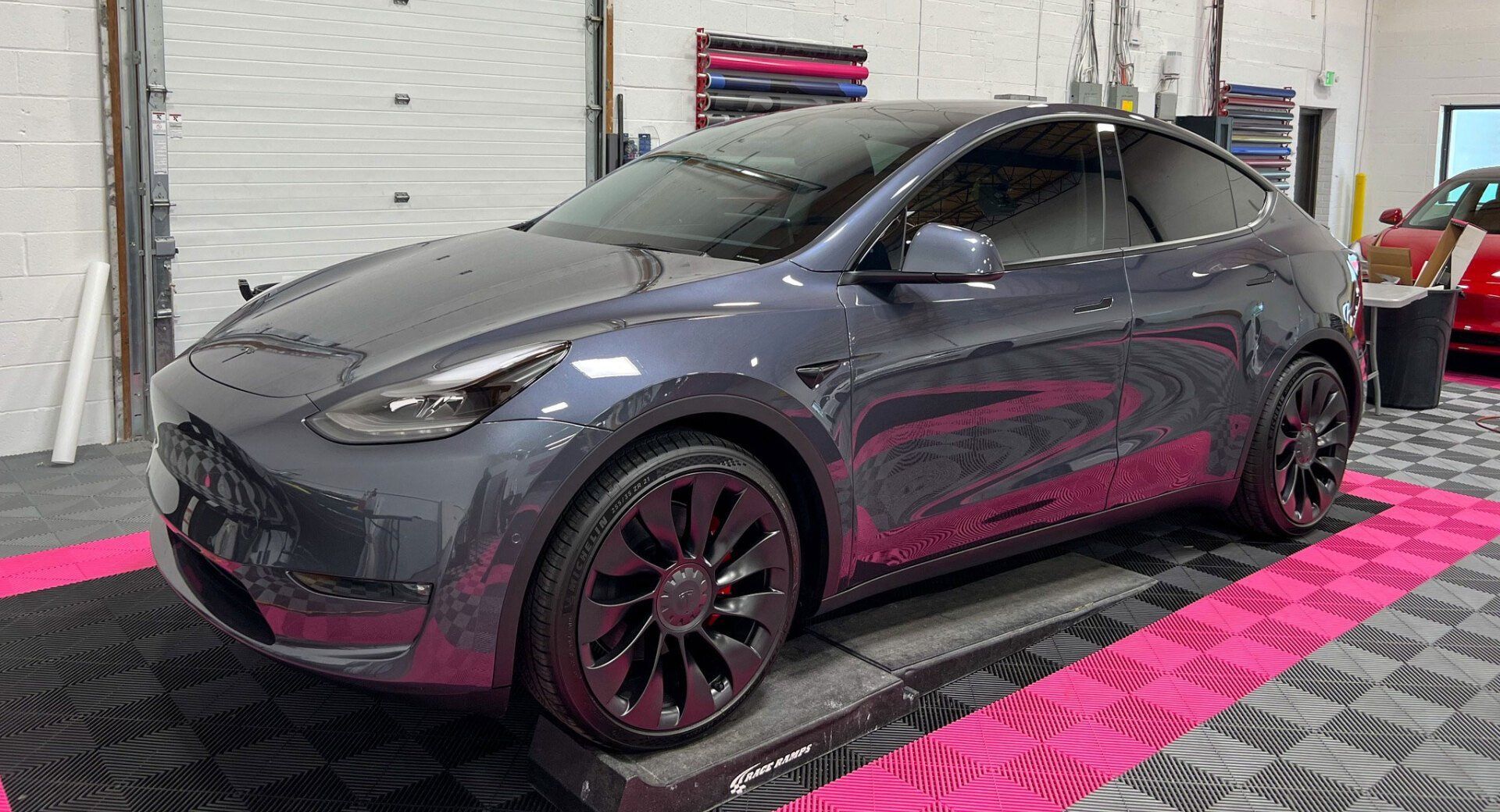
Maintenance Made Easy with Ceramic Coating
One of the most significant
benefits of ceramic coating is that it simplifies car maintenance, making car care a breeze rather than a chore. The hydrophobic (water-repelling) nature of ceramic coating creates a protective layer that repels water and prevents dirt, grime, and contaminants from bonding to the surface of your car. This makes your Tesla easier to clean, saving you time and effort.
The hydrophobic properties of the ceramic coating act as a shield against water-based contaminants such as rainwater, which simply bead up and roll off the surface instead of being absorbed by the paint. This means that your Tesla stays cleaner for longer periods of time between washes, reducing the frequency of washing and detailing. It essentially acts like a shield that preserves the clean look of your Tesla, keeping it gleaming and shiny for an extended period of time.
Think about when it rains: water droplets are no longer retained on the surface of the car, and when you're driving fast enough, you may not need to use wipers at all since the rain just slides right off the windshield. The same happens with your Tesla's body; it becomes significantly easier to clean away mud, dust, or pollen because these particles find it difficult to adhere to the slick, protected surface.
Regular washing takes considerably less time and effort and saves you money in the long run, as extended periods between comprehensive detailing ensure your paint does not degrade quickly. Since dust and grime have a harder time sticking to the coating, each cleaning session becomes simpler—almost therapeutic.
The Professional Application Debate
When considering ceramic coating for your Tesla, the debate between professional application and do-it-yourself (DIY) kits is essential. While some car owners may feel confident in their ability to apply the coating themselves, others prefer to leave it in the hands of certified detailers for a more thorough and uniform finish.
A crucial point to remember is that
professional ceramic coating application by certified detailers ensures not only uniform coverage but also proper bonding of the coating to the paint. Achieving a consistent and complete application across the entire vehicle is challenging for most individuals, and uneven coverage could lead to patchiness or inadequate protection. Additionally, professional detailing services are equipped with specialized tools and expertise that guarantee a high-quality finish.
One of the key advantages of opting for a professional application is the warranty that comes with it. This warranty serves as an assurance of the coating's quality and durability, providing added peace of mind for Tesla owners. In contrast, DIY kits may not offer the same level of warranty or long-term protection, which can be a noteworthy consideration when investing in ceramic coating.
Furthermore, professional detailers have the expertise and experience to address specific needs and challenges presented by different vehicle surfaces. This tailored approach ensures that the ceramic coating is seamlessly integrated with the car's paint, maximizing its protective capabilities and aesthetic appeal.
Consider this comparison: DIY ceramic coating may seem like a cost-effective solution at first, but the benefits of professional application go beyond just convenience. It's akin to a tailored suit versus something off-the-rack. While you might be able to get a decent fit with standard sizing, nothing beats the precision and customized fit of a tailor-made suit.
Moreover, professional detailers are well-versed in correcting potential defects and imperfections in the paint before applying the ceramic coating, ensuring that your Tesla gets the best possible treatment inside and out.
For those who are meticulous about every detail concerning their cherished vehicles, understanding the lifetime cost and durability of ceramic coatings becomes paramount. Let's now turn our attention to uncovering these essential factors.
Ceramic Coating: Lifetime Cost and Durability
Ceramic coating holds the promise of shielding your Tesla's paintwork for several years, ensuring a durable layer that withstands both wear and weather. The longevity of ceramic coatings depends on various factors, primarily their maintenance and the environmental conditions they're exposed to.
If well maintained, a ceramic coating can typically last between 2 and 5 years. Adequate maintenance involves regular washing and meticulous attention to bird droppings, tree sap, and other pollutants that can compromise the protective layer. Moreover, the coating's durability can be impacted by exposure to harsh weather conditions. For example, frequent exposure to extreme sunlight or harsh winters with salted roads can affect the coating's longevity.
Weighing the Decision on Ceramic Coating for Your Tesla
Deciding on a ceramic coating for your precious Tesla is a significant choice. When you want to take care of something as valuable as a Tesla, it's crucial to consider all the factors that go into this decision.
First and foremost, let's talk about the climate where you live. If you're in a place where it rains or snows often, dirt and grime can accumulate on your car quickly. A ceramic coat acts as a protective shield, making cleaning easier and preventing damage due to environmental factors. Even if you don't live in an area with harsh weather, parking conditions and exposure to sunlight could still be factors. It's important to consider what kind of weather your car will be exposed to regularly.
Moreover, the cost of keeping your Tesla looking great can be much lower over time with a ceramic coating. It reduces the number of professional cleanings necessary because of its hydrophobic properties, meaning water in rain and from washing beads up and slides off the surface easily. This makes it harder for dirt to stick, keeping your car cleaner for longer periods of time.
Owner preference is also a key consideration when deciding whether to ceramic coat your Tesla. Maybe you love spending time cleaning and maintaining your car yourself, or perhaps you prefer having professional auto detailers handle it. The ease of maintenance provided by ceramic coating may be the factor that tips the scale in its favor.
It's important to get personalized advice when making this decision. Consulting with an experienced auto detailer can provide valuable insights tailored specifically to your individual needs and circumstances.
When considering ceramic coating for your Tesla, weigh the upfront cost against the long-term benefits. The decision should consider factors such as the local climate, the frequency of car washing, and the owner's preference for maintaining the car's appearance. Consulting with a professional auto detailer can provide personalized advice tailored to your specific needs and circumstances.
In conclusion, before making any decisions about ceramic coating your Tesla, evaluate the environment, your own preferences, and how this investment will impact the long-term appearance and maintenance of your vehicle.
If you are ready to make an informed decision about ceramic coating or paint protection for your beloved Tesla, contact us at
Detail Solutions or call us at (410) 238-3000 for a consultation.

